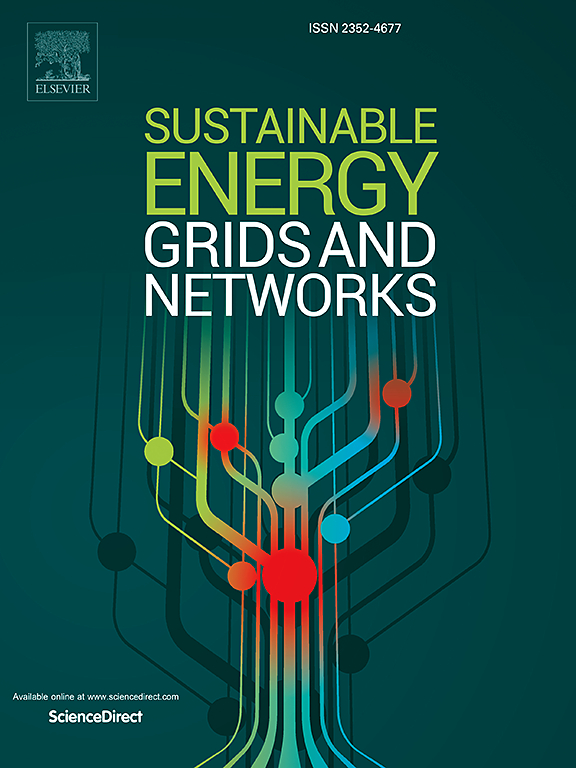基于图的电动汽车充电需求时空关注网络预测方法
IF 5.6
2区 工程技术
Q2 ENERGY & FUELS
引用次数: 0
摘要
电动汽车(ev)的加速普及正在从根本上重塑城市交通和能源系统。然而,不断增长的充电需求给城市电网带来了巨大压力,尤其是在深圳等大城市的高峰时段。准确的短期充电需求预测对于优化基础设施布局、维护电网稳定、支持数据驱动的能源政策、实现城市可持续发展至关重要。为解决电动汽车充电需求的动态时空特征,提出了一种基于图卷积网络和注意机制的新型图时空注意网络(G-STAN)。该模型采用残差时间卷积网络(Res-TCN)捕捉短期负荷波动,采用简单图卷积注意(Sim-GCA)模块模拟247个交通区域的空间交互,采用时间模式注意(TPA)模块关注高峰时段和关键功能区。在真实的城市充电数据集上进行评估后,G-STAN的RMSE、MAE和MAPE分别提高了21.92 %、36.96 %和16.92 %,优于现有模型。通过轻量级设计和多模态输入集成,所建议的框架实现了高效、可扩展和响应策略的预测。本研究提出了一种新的预测范式,与现有模型相比,它不仅显著提高了预测精度,而且增强了模型的可解释性、可扩展性和对策略信号的响应性。它为电动汽车充电行为的实时智能监管提供了一个可操作的框架,支持智慧城市生态系统中城市能源管理和可持续发展目标之间的协同作用。本文章由计算机程序翻译,如有差异,请以英文原文为准。
An electric vehicle charging demand prediction approach based on a Graph-based Spatio-temporal Attention Network
The accelerated adoption of electric vehicles (EVs) is fundamentally reshaping urban transportation and energy systems. However, the growing charging demand creates significant stress on urban power grids, particularly during peak hours in megacities like Shenzhen. Accurate short-term prediction of charging demand is crucial for optimizing infrastructure layout, maintaining grid stability, and supporting data-driven energy policies for sustainable urban development. This study proposes a novel Graph-based Spatio-Temporal Attention Network (G-STAN) that integrates graph convolutional networks and attention mechanisms to address the dynamic spatio-temporal characteristics of EV charging demand. The model employs a Residual Temporal Convolution Network (Res-TCN) to capture short-term load fluctuations, a Simple Graph Convolution Attention (Sim-GCA) module to model spatial interactions across 247 traffic zones, and a Temporal Pattern Attention (TPA) module to focus on peak hours and key functional areas. Evaluated on a real-world citywide charging dataset, G-STAN outperforms existing models by improving RMSE, MAE, and MAPE by 21.92 %, 36.96 %, and 16.92 %, respectively. With a lightweight design and multimodal input integration, the proposed framework enables efficient, scalable, and policy-responsive forecasting. This study proposes a novel prediction paradigm that not only significantly improves the prediction accuracy compared to state-of-the-art models, but also enhances model interpretability, scalability, and responsiveness to policy signals. It provides an actionable framework for real-time intelligent regulation of EV charging behaviors, supporting the synergy between urban energy management and sustainability goals in smart city ecosystems.
求助全文
通过发布文献求助,成功后即可免费获取论文全文。
去求助
来源期刊

Sustainable Energy Grids & Networks
Energy-Energy Engineering and Power Technology
CiteScore
7.90
自引率
13.00%
发文量
206
审稿时长
49 days
期刊介绍:
Sustainable Energy, Grids and Networks (SEGAN)is an international peer-reviewed publication for theoretical and applied research dealing with energy, information grids and power networks, including smart grids from super to micro grid scales. SEGAN welcomes papers describing fundamental advances in mathematical, statistical or computational methods with application to power and energy systems, as well as papers on applications, computation and modeling in the areas of electrical and energy systems with coupled information and communication technologies.
 求助内容:
求助内容: 应助结果提醒方式:
应助结果提醒方式:


